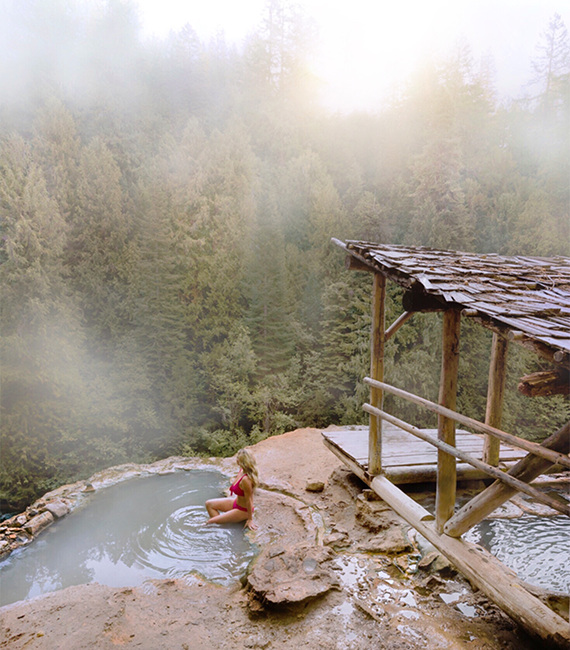
“There are risks and costs to action, but they are far less than the long-range risk of comfortable inaction.”
– John F Kennedy
Disclaimer: This blog post was sponsored by Canadian Geographic. However, as always, all thoughts and opinions are entirely my own. I will continue to promote only products, services and initiatives that I truly believe in and would recommend to others.
As I explore this beautiful world of ours, I am continually in awe of its magnificence. In Canada alone, my home sweet home, I am struck by its vast beauty and incredible range of terrain.
One of the most important ways we can ensure our incredible country remains intact for future generations to come is to protect its environment.
I was excited to discover 10,000 Changes — an innovative Canadian initiative designed to reduce plastics pollution. With support from Environment and Climate Change Canada, Canadian Geographic has partnered with The Royal Canadian Geographical Society and the Recycling Council of Ontario to launch this multi-platform, countrywide campaign.
What’s wrong with plastic?
There isn’t a day that goes by that we don’t use plastic. We drink our favourite beverages from plastic straws, eat takeout with plastic forks, buy dozens of products in plastic wrapping and carry our groceries home in plastic bags. It’s all around us and ingrained into our society’s habits of consumption.
 Canada produces more waste per capita than any other country in the world
Canada produces more waste per capita than any other country in the world
A study of 2009 data showed that Canada produced 777 kg of garbage per citizen. This was substantially higher than the average of 578 kg across all 17 countries studied.
Read more about Canada’s waste production
 Annually, the world produces 300 million tonnes of plastic
Annually, the world produces 300 million tonnes of plastic
That’s a LOT of plastic! We’re just now starting to realize the long-term damages microplastics have on human, animal and marine life.
Learn more stats about our plastic consumption
Less than 10% of plastic is recycled in Canada
Part of the problem is that not every municipality has the resources or equipment to be able to process all types of plastic.
Learn about the different types of plastic
Many everyday items contain hidden plastics
A shocking amount of the items we use every day contain hidden plastics that rarely get recycled because they’re stuck or glued to another material, and they’re often made of a lower-grade plastic that can’t be reused. Worst of all, these are items you’d never assume would contain any plastic at all.
Here are just a few of the surprising items that contain hidden plastics:
- tea bags
- fleece
- wet wipes
- paper cups
- Tetra Paks
- face washes
- shower gels
- body scrubs
- cotton wands
- fabric softener sheets
- coffee bags
- produce stickers
- cash register receipts
Learn more about items that contain hidden plastics
“Change is never easy, and it often creates discord, but when people come together for the good of humanity and the Earth, we can accomplish great things.”
– David Suzuki
How can we solve the plastic problem?
The plastics problem can seem completely overwhelming and insurmountable. What can you do? How can just one person make a difference?
Canadian Geographic believes that solving the plastic problem will take 10,000 changes. The solution will require a “paradigm shift” of enormous magnitude, which can be accomplished by individuals, companies, communities, governments, institutions — all of us working separately and together.
The first step is plastics education
Educating ourselves is key to combating the problem! Plastic 101 is a great resource to find out more about the common uses, material qualities, recyclability and environmental risk of different kinds of plastic. For instance, I found out the type of plastic that poses the most danger is polycarbonate and is used to make items such as water bottles. Some plastic resins may never break down in nature, so we have to do our part to keep them out of landfills, forests, rivers and oceans.
Refuse, Replace and Reimagine Plastics
I’m sure you’re like me and have heard of the 3Rs – reduce, reuse and recycle. Well, 10,000 Changes is promoting the new 3Rs – refuse, replace and reimagine. The new 3Rs focus on diminishing our reliance and use of plastic.
We can Refuse to use plastic such as single-use straws, cutlery and bags and seek out alternatives. 10,000 Changes even provides a list of solutions and alternatives to reduce our plastic footprint.
We can Replace plastic with materials that are better for our environment. This is where the Canadian industry can lead the way by designing and manufacturing safe alternatives to plastic. 10,000 Changes is encouraging companies to partner with them. You can find out how to become a 10,000 Changes™ partner here.
We can Reimagine and re-evaluate our use of all types of plastic from conception and creation to consumption and continual chucking. With the help of government guidelines and incentives, we can make big changes to reduce our plastic footprint.
“Never believe that a few caring people can’t change the world. For, indeed, that’s all whoever have.”
– Margaret Mead
What else can we do to lessen the plastic footprint?
In addition to recycling as much plastic as we can – depending on what your municipality allows – we will be able to reduce the use of plastic in general and slow production as much as possible. Through the 10,000 Changes campaign, we can lessen Canada’s plastic footprint. Canadian Geographic and its partners are calling for all Canadians from coast to coast to coast to be part of the solution by making personal commitments.
I’ve personally committed to making changes to lessen my plastic footprint, and you can too! 10,000 Changes makes it easy to make commitments by giving you a list to choose from here.
You can make changes in specific areas such as:
- At the supermarket by using reusable bags.
- In the kitchen by using alternatives to single-use coffee pods.
- In your closet by choosing natural fabrics and donating used clothing.
- On the go by bringing your own aluminum water bottle and/or travel mug.
- Party planning without plastic cups, straws and cutlery.
- Personal care by using bar soap and doing less laundry.
- Purchasing smarter by supporting changemakers and researching companies that have light plastic footprints.
- Recycling right by knowing what plastics and other items are accepted by your local municipality.
It’s time. I am committed to making a difference and I’m grateful for the 10,000 Changes initiative for showing me the way, one change at a time. Join the movement to save Canada and the entire planet. I want Canada and the rest of this beautiful planet to always be here for me, for you, for our children, for future generations … And for that, we are responsible now.
PIN FOR LATER
![]()
Questions about 10,000 Changes or how you can reduce your plastics consumption? Comments about this post? Feel free to leave me a comment below!

























leave me a comment